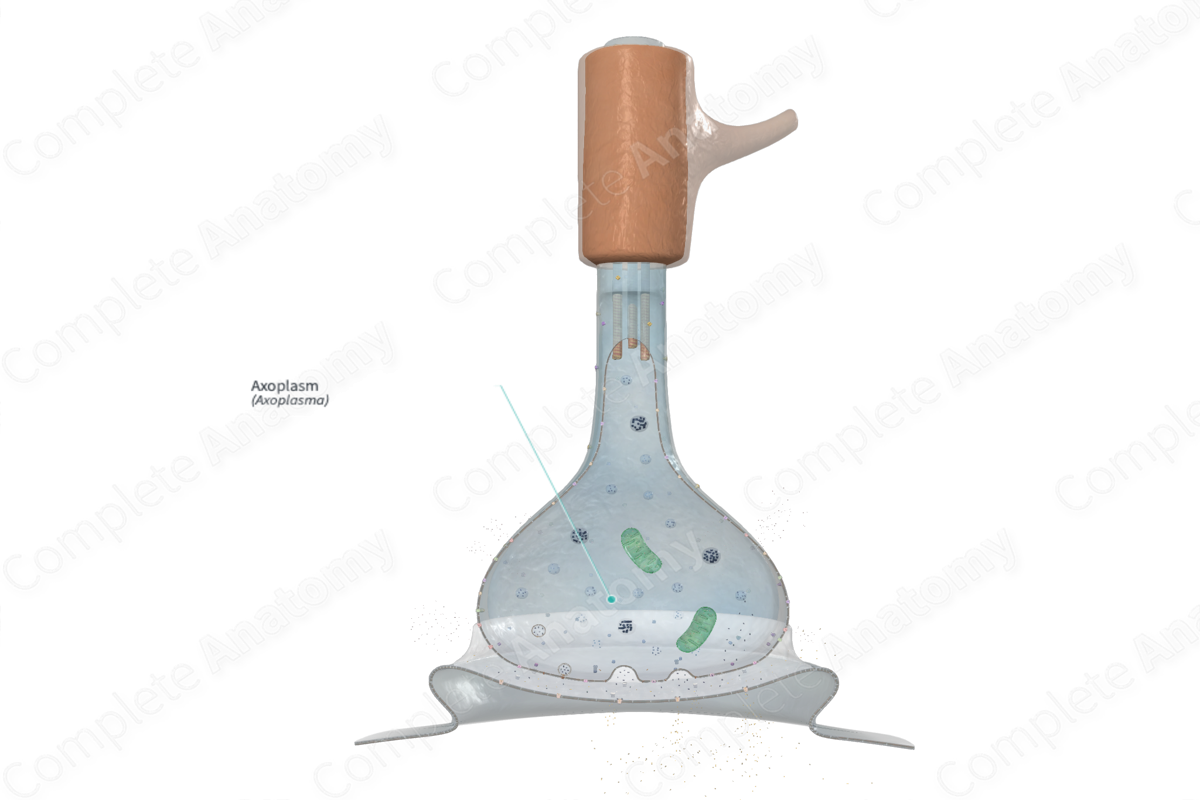
Structure
Most neurons have only one thin axon. The axon arises from the axon hillock. An axon is tubular with a uniform diameter along its entire length although the diameter varies depending on the type of neuron. An axon is bound by plasmalemma known as axolemma. The cytoplasm of an axon is known as the axoplasm. The axoplasm contains mitochondria, cytoskeletal elements, and some cisternae of the smooth endoplasmic reticulum (Mescher, 2013). The axoplasm is devoid of Nissl granules and Golgi complexes (Splittgerber, 2018).
Function
Cytoskeletal elements found within the axoplasm provide structural strength to the axon. In addition, they transport substances away from the nerve cell body (anterograde flow). Retrograde flow transports molecules (taken up by endocytosis at the axon terminals) back towards the nerve cell body (Marieb, Wilhelm and Mallatt, 2012; Ross and Pawlina, 2006).
Clinical Correlates
—Some viral diseases such as rabies, herpes simplex, herpes zoster, and perhaps poliomyelitis take advantage of axonal transport to spread to different locations in the body.
—Diffuse axonal injury is characterized by disruption of the axon cytoskeleton.
—Stretching of axons during traumatic injury causes physical disruption to, and proteolytic degradation of, the cytoskeleton.
References
Dorland, W. (2011) Dorland's Illustrated Medical Dictionary. 32nd edn. Philadelphia, USA: Elsevier Saunders.
Marieb, E. N., Wilhelm, P. B. and Mallatt, J. (2012) Human Anatomy. fifth edn.: Benjamin Cummings.
Mescher, A. (2013) Junqueira's Basic Histology: Text and Atlas. 13th edn.: McGraw-Hill Education.
Ross, M. H. and Pawlina, W. (2006) Histology: A text and atlas. Lippincott Williams & Wilkins.
Splittgerber, R. (2018) Snell's Clinical Neuroanatomy. Wolters Kluwer Health.
